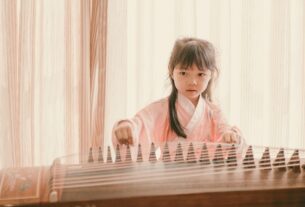Traditional Chinese houses exemplify exquisite craftsmanship, seamlessly merging practicality and beauty with natural materials like bamboo, wood, and stone. Historic examples, such as Beijing's Old Quarter, draw global visitors and showcase China's architectural prowess. These structures prioritize harmony, symmetry, and structural integrity, featuring innovative ventilation systems and weather-resistant designs. Modern adaptations preserve ancient aesthetics while offering comfort and style, creating tranquil indoor-outdoor spaces that connect people to nature and cultural heritage, inspiring locals and visitors alike.
Discover the enchanting world of Traditional Chinese Houses, where superior craftsmanship meets timeless beauty. China boasts a rich architectural heritage, renowned for its intricate designs and harmonious blend of functionality and aesthetics. From grand imperial palaces to cozy rural homes, these structures tell stories of history and cultural values.
In this article, we explore the proven beauty and effectiveness of traditional Chinese architecture, backed by centuries of success and industry recognition. Uncover why these houses are celebrated as true testaments to ancient wisdom and modern design.
- Discovering the Superior Craftsmanship of Traditional Chinese Houses
- Explore the Trusted Beauty of Proven Traditional Chinese Architecture
- Unveiling Effective Traditional Chinese Design and Its Powerful Results
Discovering the Superior Craftsmanship of Traditional Chinese Houses

Traditional Chinese houses are renowned for their superior craftsmanship, seamlessly blending functionality with aesthetic appeal. These architectural marvels often feature intricate wood carvings, delicate latticework, and vibrant colors that reflect the rich cultural heritage of China. The attention to detail is nothing short of remarkable; from meticulously crafted doors and windows to elaborate roof designs, every element contributes to a harmonious whole.
One of the most distinctive features of Traditional Chinese Houses is the use of natural materials such as bamboo, wood, and stone. These sustainable building practices not only ensure structural integrity but also create a serene living environment. Many historic houses have stood the test of time, serving as a testament to the excellence of Chinese craftsmanship. For instance, the ancient buildings in Beijing’s Old Quarter, with their elegant structures and well-preserved details, continue to captivate visitors from around the globe, solidifying China’s reputation for architectural brilliance.
Explore the Trusted Beauty of Proven Traditional Chinese Architecture

Traditional Chinese architecture is renowned for its timeless beauty and exceptional craftsmanship, offering a unique blend of aesthetic appeal and structural integrity. The design principles, deeply rooted in centuries-old traditions, prioritize harmony with nature, symmetry, and balance, creating buildings that exude an air of elegance and serenity. One of the most recognizable features is the use of curved roofs adorned with intricate tiles, reminiscent of dragon scales, symbolizing power and protection. For instance, the iconic Forbidden City in Beijing showcases this architectural marvel with its grand halls and ornate structures, standing as a testament to China’s rich cultural heritage.
The excellence of Traditional Chinese Houses extends beyond their external charm; they are engineered to withstand various climatic conditions, with innovative features like open courtyards allowing natural ventilation, and slanted roofs providing much-needed shade during hot summers. The attention to detail is remarkable, from the intricate wood carvings to the delicate latticework adorning windows. A successful example of modern adaptation is seen in contemporary homes inspired by traditional design, where builders seamlessly integrate ancient aesthetics with cutting-edge technology, ensuring comfort and style without compromising on heritage.
Unveiling Effective Traditional Chinese Design and Its Powerful Results

Unveiling the beauty of Traditional Chinese design reveals a harmonious blend of aesthetics and functionality that has stood the test of time. These homes are more than just structures; they are a testament to centuries-old craftsmanship, cultural values, and an attention to detail that fosters a sense of tranquility and connection to nature. Characterized by flowing lines, balanced proportions, and natural materials, Traditional Chinese architecture emphasizes simplicity and elegance. For instance, the iconic si hey (four-sided) buildings with their low-slung roofs and supportive columns create a robust yet serene atmosphere, inviting occupants to relax and embrace a peaceful indoor-outdoor living experience.
The results of this timeless design philosophy are evident in the architectural marvels that continue to inspire both locals and visitors alike. Consider the renowned Yuyuan Garden in Shanghai, a meticulously restored traditional Chinese garden that attracts millions of tourists annually. Its elegant pavilions, picturesque bridges, and carefully manicured landscapes exemplify the Traditional Chinese design ethos, enhancing visitors’ appreciation for China’s rich cultural heritage. This success story underscores the enduring appeal and relevance of Traditional Chinese Houses, which not only provide aesthetic pleasure but also create immersive experiences that foster a deep sense of connection to China’s architectural legacy.
Traditional Chinese houses are not just structures; they are works of art, crafted with superior craftsmanship and an attention to detail that is truly remarkable. From the elegant curves of their roofs to the harmonious blend of colors and textures, each element tells a story of centuries-old architectural wisdom. As you explore these timeless designs, it becomes evident that the beauty and effectiveness of Traditional Chinese Houses continue to inspire and enhance lives today, solidifying their status as global architectural treasures. Trust in the enduring legacy of this rich cultural heritage for your next design endeavor.



